
Asian American Youth Leaders
PhotoVoice Project Spring 2023
What is Love in the Time of Hate?
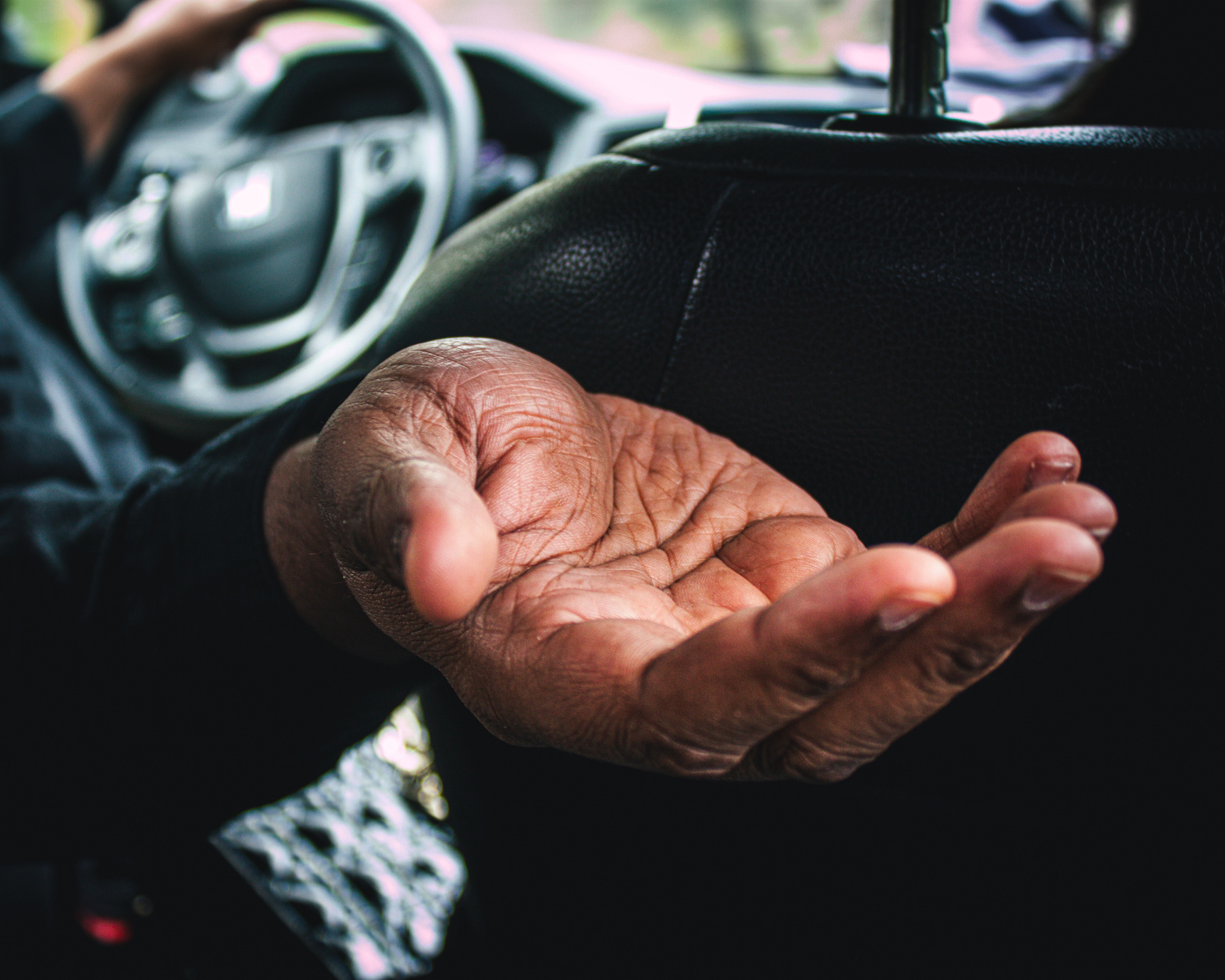
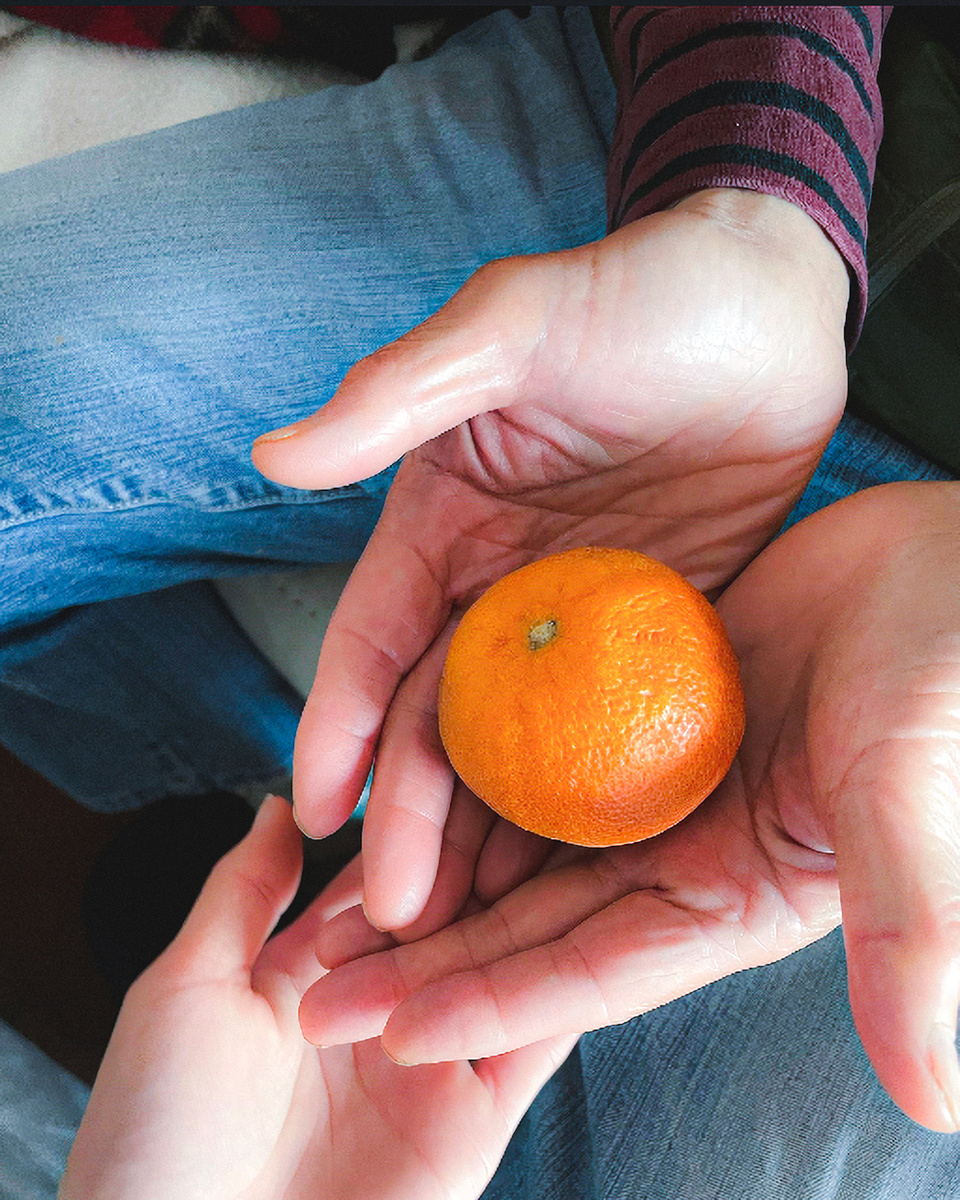
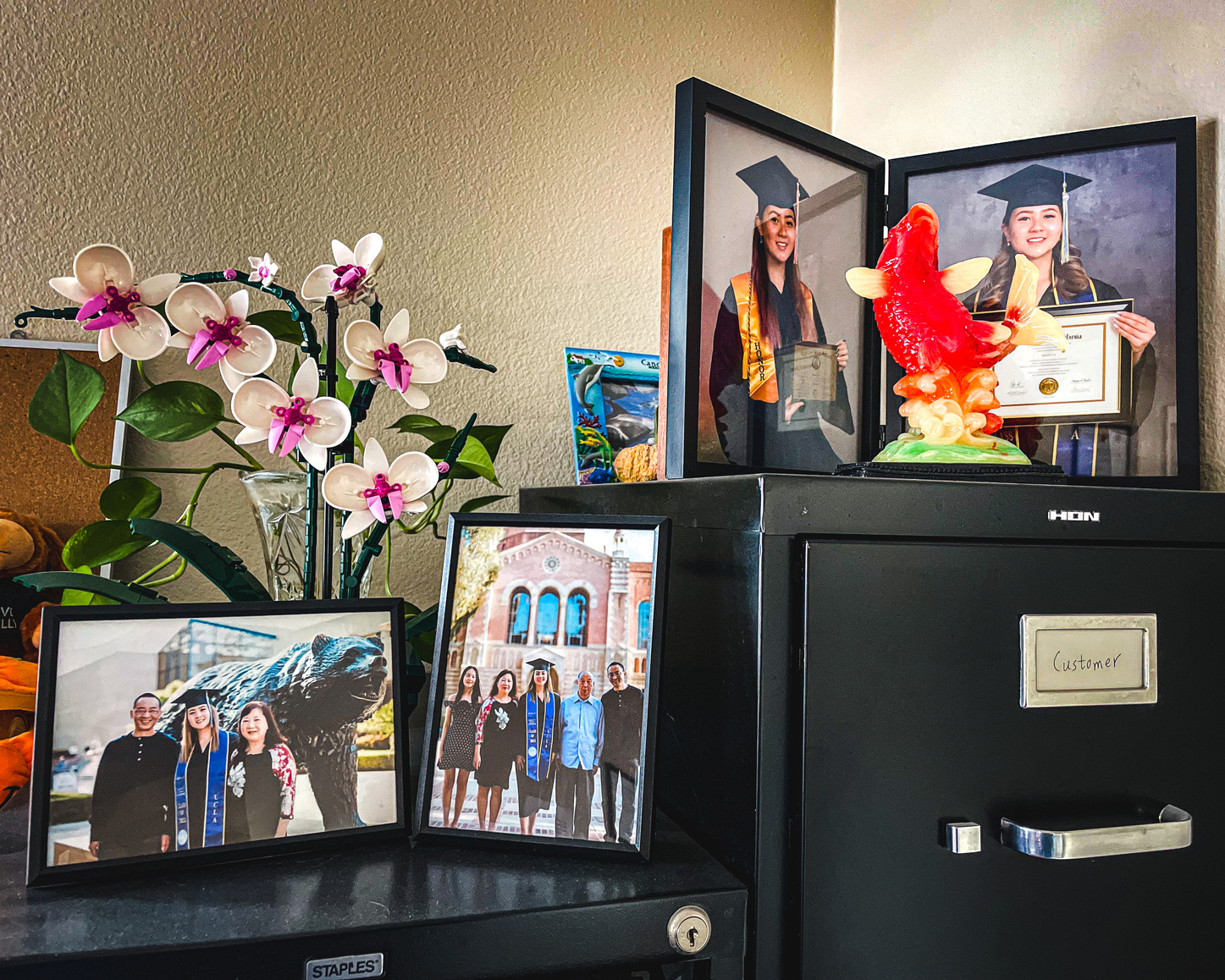
No Mud. No Lotus.
"Happiness and suffering are not enemies
Suffering is made of happiness, and happiness is made of suffering.
If there is no suffering, there is no happiness. If there is no happiness, there is no suffering.
It's like the lotus flower and the mud. If there is no mud, you cannot grow lotus.
The lotus stays there sometimes and becomes mud again.
Looking into the lotus, you see the mud.
Looking into the mud, you see future lotus."
- Thich Nhat Hanh
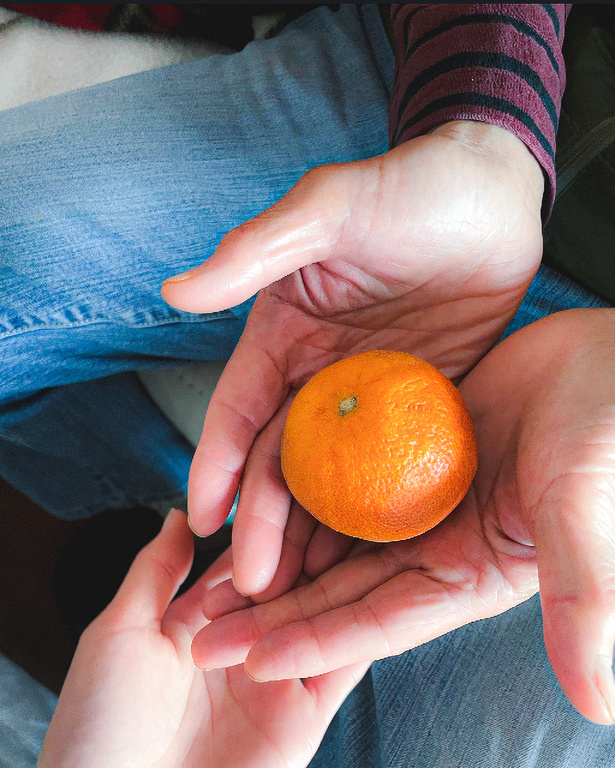
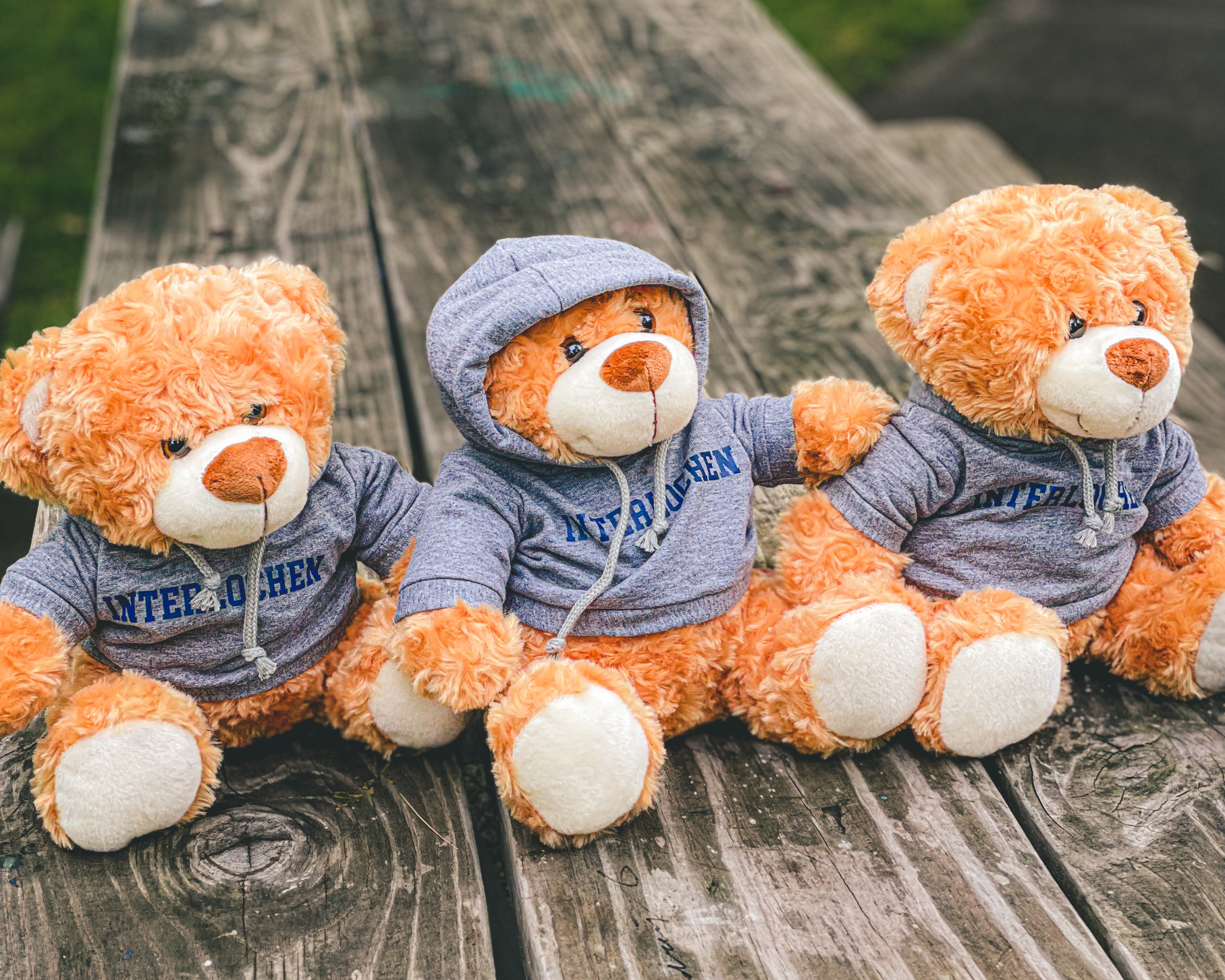

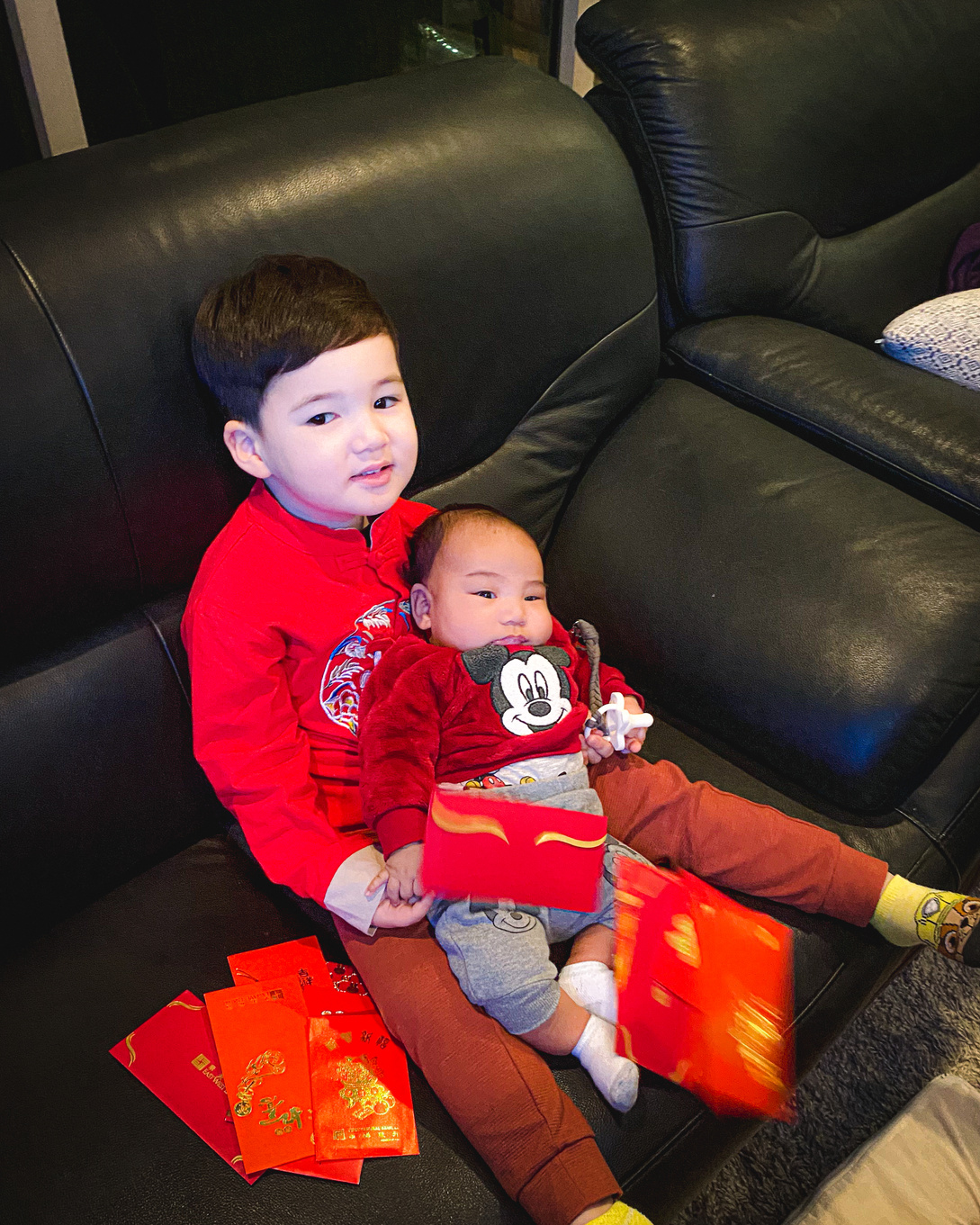
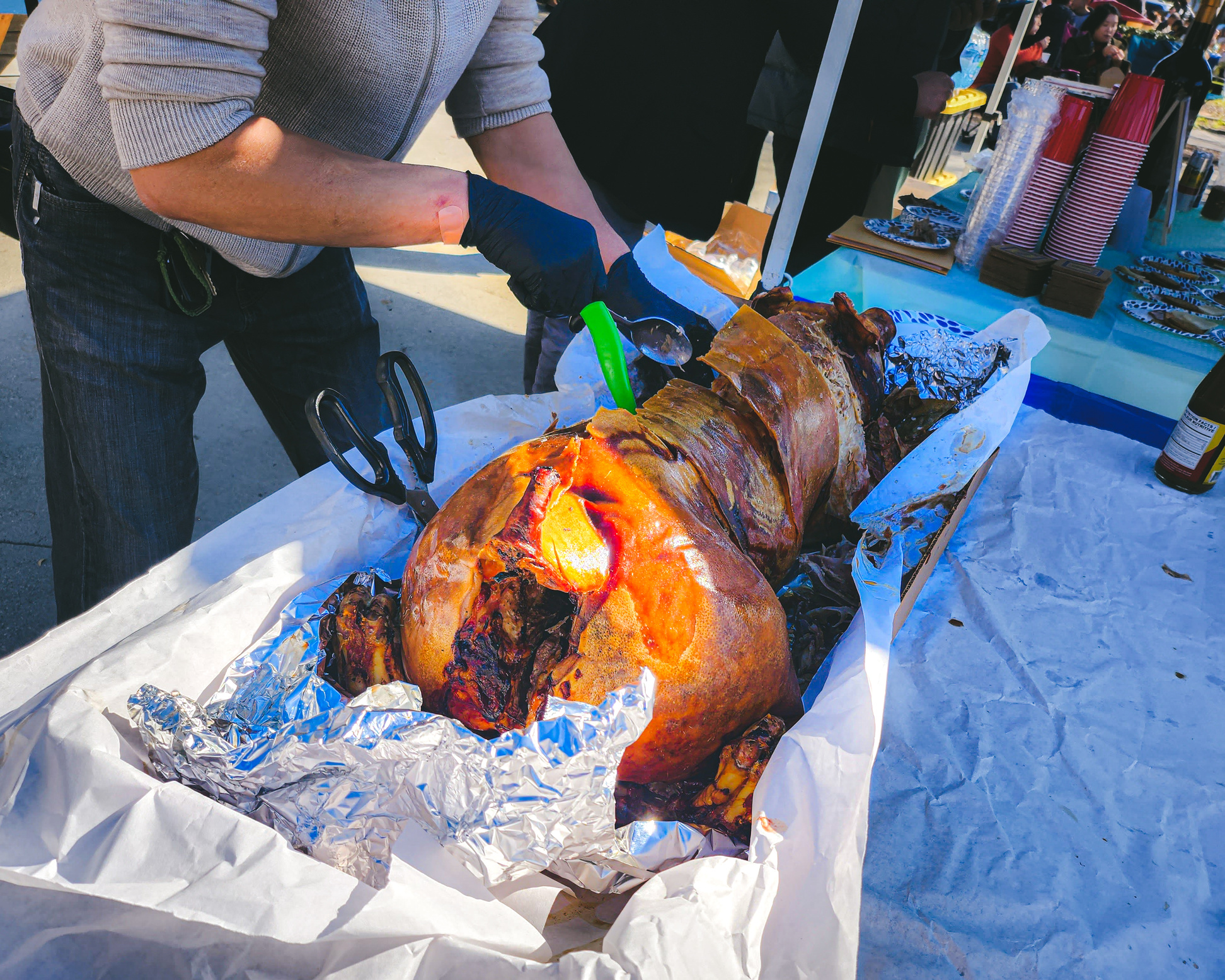
Project Purpose
We aim to document the stories and memories of love and care in AAPI communities in Orange County amid the rise of Anti-Asian Violence. We will be using PhotoVoice, a technique that utilizes photography to help people represent themselves and tell their own stories.
"We can begin by doing small things at the local level, like planting community gardens or looking out for our neighbors. That is how change takes place in living systems: not from above but from within, from many local actions occurring simultaneously."
— Grace Lee Boggs, 2007

A Tint of You in Me
Chaerin Yoon
A mocktail with a slice of lemon and a piece of mint is shown in this picture. The primary objects of the photo are the lemon and mint. Love is harmony in this picture. The lemon, mint, and bright red drink create a beautiful harmony that compliments all three aspects of the mocktail. I went to Hell’s Kitchen in Las Vegas and ordered a mocktail as a refresher drink before the food came out. Although the piece of mint or the slice of lemon is not a huge necessity to the drink that it affects hugely, without it, the drink would not taste the same. Just like the drink, there are some aspects of love, often unnoticed and unappreciated, but without it, love wouldn’t be the piecesfill
same. Without the little things that fill up the lacking pieces and give the perfect balance to something that would otherwise be a little imperfect, love is made beautiful. I can relate to this form of love because I, too, am a human who has imperfections and makes mistakes. However, there is always someone who makes up for those little holes and dents, filling me up, and making me who I am now. In my case, that someone is my family. Although they do not pursue love strongly to the point it affects me daringly, without it, I wouldn’t be who I am. Because they were there, by my side with me, behind me to support and trust me, and sometimes in front of me to provide shelter for hardships, I was able to take steps forward and grow. A lot of times, Asian Americans are not too fond or familiar with expressing or pursuing love outgoingly. We often express love almost in an unrecognizable way, like the slice of lemon in the drink. Asian Americans express love this way because of cultural compulsion when it comes to expression. Even from my own experience of living in a fully Asian American community, we often put ourselves in situations where we choose to stand there, firm and still, so that that one person may find comfort and strength in spreading their wings to fly off and be the best of themselves. The picture is trying to tell that no matter how little or not evident love may be, that is what gives love value. Although love is unseen and invisible, it is so big and great that it fills our hearts and our surroundings and reflects our everyday life. Love lets us take the step that we would otherwise be too scared to. Because we ourselves are so big, like the red drink, we often don’t recognize the slice of lemon in us that our loved ones give. Sometimes, the darkness of red eats away the brightness of yellow. However, a tint of yellow, when mixed with red, can create orange. Without the lemon, we wouldn’t be the same. This shows that Asian Americans’ love, although may not feel fulfilling or expressive, is always existent and shaping us. Knowing the story behind this picture, we can grow to appreciate the love that is given to us, whether it may feel small or big. We can work to be more expressive, to remove the cultural compulsion.
Joy Ride
Glory Parel
Shown in this picture is my father's hand reaching back from the front seat of a car into the backseat of the car asking for food to snack on while he drives. The love shown is the way my family shows appreciation and gratitude for each other through sharing small snacks and going on road trips together. In this photo, my family went on a road trip together, and my dad, who had been driving for a long time and was probably pretty tired, heard me open my bag of snacks and reached into the back of the car to ask for some. It was a really simple way to show

my appreciation for his hard work in my life and for his driving. Little things like asking for food within the family and sharing with each other can be experienced by a lot of people and that love can sometimes be quite simple and not extravagant. My parents are often working hard and also going through things emotionally that I could probably never completely grasp. The mundane act of showing gratitude by being willing to give up a small part of my food helps build my family connection. My bond with my dad is pretty strong, and doing little things for each other is how my family expresses love. Appreciation for what you already have around you makes life and love for the people around you easier. This appreciation is shown within my family through simple acts of service like doing the dishes or just cleaning up for each other. We also like to spend time with each other doing absolutely nothing but watching TV and being in each other’s presence. These little, seemingly meaningless things help connect my family together in our own special way.

Teddy Bears
Lucy Woo
The background is outdoors, with a picnic table and grass on a cloudy day. Love is shown by our friendship built over time. This photo was taken at a summer program that I went to last year. My close friends bought me this teddy bear so that we could remember each other. Love is expressed through friendship and kindness toward one another. The thought of having someone think of you and the thought that one puts behind the gift is what was really meaningful to me. I sometimes outside
sometimes get my friends gifts, and it makes them really happy, which also puts me in a good mood. Friendships are important because it is another way of expressing yourself outside of your family. Sometimes, there are things that you can’t freely express to your family like you do your friends, and knowing that someone has your back is really important for me. Friendships can last a long time because you never know what can happen. I have experienced love through friendship before because on special days, for example birthdays, I receive gifts from my friends. In the photo, one of the teddy bears represents me, and the two others represent my friends. Even the bears show each of my friends’ characteristics. One of my friends, who always keeps their hoodie up, wanted her bear to have the hoodie on. I think Asian Americans express love in this way because giving gifts is a way of expressing love and care for one another. This picture is trying to tell people that friendships can last a lifetime. Even though I was only with them for 6 weeks, I still think about them and text them sometimes. Although this was at a summer camp and my friends don’t live close to me, you never know when you’ll meet them again. For me, this teddy bear means a lot, and I still keep it on my bed as a way to hold onto all the special memories I had with my friends. I also sleep with this teddy bear as a comfort object. Sometimes, when I get really stressed out or need something to talk to other than a person, I talk to this teddy bear, and it helps bring happiness into my life. I think people should know that even a small gift can really make an impact on the other person. We are all unique in our ways through physical traits and personalities.
Ocean of Love
Sienna Lam
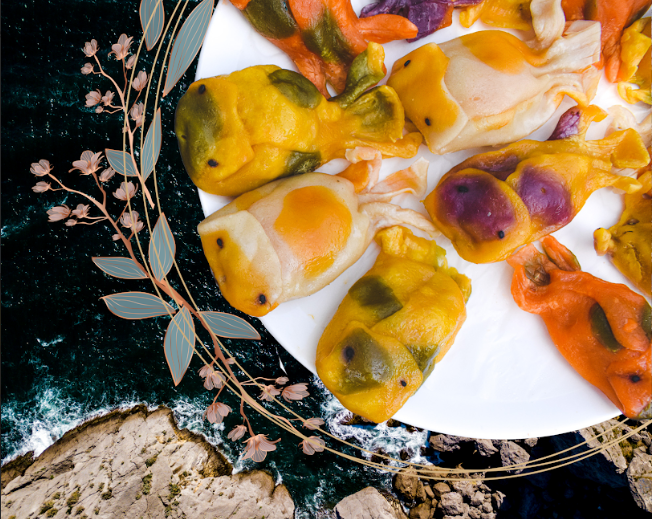
This picture shows a home cooked meal my grandmother made for a family meal. The primary subject of this photo are the plates of shrimp and fish-shaped dumplings that are featured. Because this photo has been taken from a bird's-eye view, the background features a navy blue tablecloth. In this picture, both my grandmother's passion for cooking and the care and dedication she put into creating this meal for my sisters and I represents love. Food is her love language, as well as the means she uses to express herself. It
It is clear that my grandmother put a lot of time and effort into this celebratory meal. Wrapping dumplings, especially the special ones pictured in this photograph, is not an easy task. In this photograph, it is the food itself that matters the most, not fancy, matching platters and utensils. The attention to detail in each of the fish-shaped dumplings shows the depth of care in our relationship with our grandmother, and the fish themselves also serves as a symbol that represents my sisters and I. Just like these multicolored fish, my sisters and I are a unique blend of different identities that make us who we are. No matter where we go, we will always cherish our cultural roots.

The Gift of Giving
Bryce Leng
Shown in this photograph are two babies who just got their red envelopes for Chinese New Year. Red envelopes symbolize luck and are given to children and single young adults during the Lunar New Year celebration. The tradition is rooted in Chinese beliefs about luck, prosperity, and warding off evil spirits. The family in this picture is having a Chinese New Year party. The two babies are wearing red, matching the colors of the Chinese New Year. It is believed that wearing red during the new year will bring good luck, happiness, and prosperity. The two babies are receiving a lot of red envelopes from their loving family surrounding them behind the camera.
Sometimes, it is the act of giving that is the true gift. Gifts embody our affection and appreciation. This is important because
because people need reminders that they are loved. In this picture, the two babies are being loved to the moon and back, which demonstrates the immense power of love and how it transcends material gifts. Despite their young age, their family members are actively showing their deep love for them. This serves as an important lesson on how to express love and generosity towards others, which are the true gifts that matter. In general, people should have more love towards each other and show it more often. Seeing things like this image makes me and, hopefully others happy. The jubilation stemming from the act of giving is a gift in itself for the givers. In this picture, love is not material objects or gifts but the act of giving and caring.
Caving Community
Ian Shin

Seen in this picture is a person carving a roasted pig to share with other people at a community gathering. Love in this picture is embodied in the act of sharing food and enjoying each other ‘s company. This gathering happened during Lunar New Year, and it happened because my community hadn’t had a gathering since covid, and everyone wanted to see each other and reconnect fully again. Because of the COVID-19 pandemic, we couldn’t gather in person for a long time, so everyone felt detached from each other. This picture shows
shows family love through our community deciding to share much missed time together. One of the most obvious scenes of love here is sharing food together. This gathering was important for me because I got to connect with some of my friends’ families. I didn’t really know my friends’ families, and it was super awkward to keep seeing them but not talking to them. But finally, at this event, I was able to get t to know them.
On a more intimate level, making food is how I show my family that I love them. It’s also how my family expresses their love for me. One of the biggest dishes that my dad makes is udon. My dad, funnily enough, always calls himself a chef and asks me to rate the food that he makes. Of course, I rate the food depending on how good it is. It became a tradition I shared with him.
Sharing food is a great form of love for Korean Americans. No matter what, we share food all the time in order to show our consideration and respect for each other. On personal levels, such as in the family, good food is a symbol of love and care. The story that my picture is trying to tell is that food being shared throughout Asian American communities is a form of unity. On community levels, the sharing of food is to show, as stated before, respect and consideration for others. When you give food to someone as a Korean, it means you thought enough about them to give them a package, personally made lunch, dinner, or even some type of appetizer. As small an action as it may be, sharing food brings comfot to all who receive it.

This capture meant a lot to me because it both shows the age connection and bridging that gap between generations (as seen by the dichotomy of the two hands’ appearance), and also shows the importance of giving, even when it’s the best of the batch. Visiting my grandparents has become a weekly activity for my family and me, and as we all grow older, I feel the significance of checking up on your relatives, especially when there’s a physical distance between us. Centering the photo on just our hands emphasizes that our hands are what we use to create, do, make, and feel with. Our hands are what brings us together, the physical connection can be crossed by the touch of our fingers, and I feel that the palm of our hands often symbolizes a sense of peace. Love can be shown in many ways, and in this case, I’m highlighting generosity, care, and sharing. The gesture of the orange shows how our relatives, who have lived a long life already, enjoy passing on wisdom, advice, love, and care to the younger generation. Being able to share something so valuable with another person illustrates the bond two people can have with each other despite having a physical distance between them. That’s exactly how I feel with my grandparents, and I know that in any world, we would be able to bridge the gap between us through sharing what we know, love, and also our favorite foods!
In this photo, you’ll see two hands: one of them is the hands of an elder, as you can see age spots and light wrinkles beginning to appear. The other hand belongs to someone younger because of the size and the lack of texture. Our eyes are immediately drawn to the center, seeing the bright orange fruit in the palms of the older figure. The open palms indicate that that person is handing the orange off to the cameraman; their hands are resting in a very gentle cupped position. The context behind this image is my grandfather and me during the month of Moon Festival this year when my grandparents went to the local market and bought an abundant amount of mandarin oranges. Oranges in Chinese culture represent good luck and wealth because of the bright orange color, symbolizing gold. During the month of the Moon Festival, my grandmother cooks us a wide variety of Chinese foods, as we go down to their retirement center to visit them. Right before this image was taken, my grandfather instructed me to hold out my hands as he handed me the “sweetest” orange of the batch.
Sharing Sweetness
Dylan Lam
Flavors of Home
Karina Li
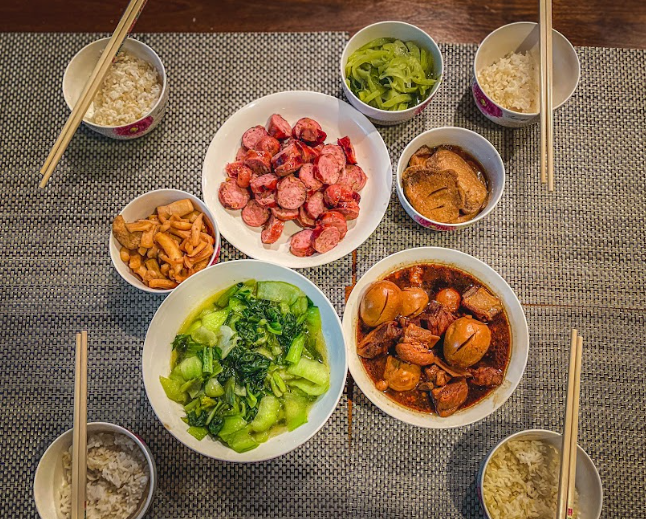
Shown in this picture is a home-cooked family meal prepared by my grandfather. The meal includes red braised pork, stir-fried bok choy, stir-fried squid, stir-fried celtuce, and braised bean curd. Here, love is expressed through the care and labor of cooking food that nourishes not only our bodies but also our cultural identity. Every day, we return to a home that is filled with flavors and aromas of love. By preparing the food, my grandpa shows that he cares about his family members enough to cook the dishes with such care. For our family, food
food is our love language and the currency of affection. Whether it be through cooking for my parents when they are busy or my parents buying me food after I’ve had a hard day of school, food preparation and consumption is how we say “I love you.”
Recipes are like memories and stories; they travel and are shared from one generation to the next. From our childhood until death, food is always present. My earliest and dearest memories include going to Chinese supermarkets and picking out the most delicious snacks, begging my mother to buy them for me. Some dishes even grow along with us. My favorite dish, ever since I was a child, is red-based pork, a recipe carried all the way to my home in the United States from my family in Shanghai. The tender, juicy pork smothered in a sweet, sticky, and savory sauce will always be a taste of home. Throughout the years I grew up, stretching out my clothes and moving on from elementary school to junior high school, this dish changed as well. My grandpa perfected it, finding a good balance between sweet and savory and finding ways to make the pork as tender as possible. Food is one of the first ways we are introduced to love, from the action of our family members setting a meal in front of us and telling us to enjoy it. Asian American families usually don’t express love verbally; instead, they show love through their actions. Thus, preparing and providing food to their family is a simple yet meaningful expression of love within Asian American families.
This picture illuminates the love language of an intergenerational household. For first-generation immigrants, food is a way of holding onto their past and preserving their memories of Asia. Despite how wonderful the new life they have developed for themselves is, there will always be nostalgia for the homeland. Moments where they miss the small town they grew up in and the delicious food their parents made for them, or the friends they hung out with after school, trying out the street food stands that crowded the streets. Therefore, by holding onto the recipes passed onto them from their family, they are able to bring a part of their life in Asia along with them to the United States and ensure that they never lose hold of their past.
For the second generation, food may be seen as a way to cling to their culture, which has gotten mixed up with their American upbringing. Various experiences make up our personality and identity, and being a second-generation Asian American, things can get confusing very fast. How do I label myself? How do I view our community? What makes me Asian? What does it mean to be Asian American? These questions may invade our minds and make the lines separating our identities gray and unbalanced. Should there be lines in the first place? In these times of confusion, we can look to the recipes passed on by our parents and grandparents, which keep us steady in the face of an identity crisis. By sharing love through food, we ensure that we maintain our cultural past and anchor ourselves with flavors of home in times of fear and anxiety. Love doesn’t have to be shown in the most evident ways, through verbal praises or gifts. It can be as simple as cooking a meal together with someone you love, sharing stories and memories while ensuring that the recipe — the flavors of home and the Asian American experience — will never get lost.
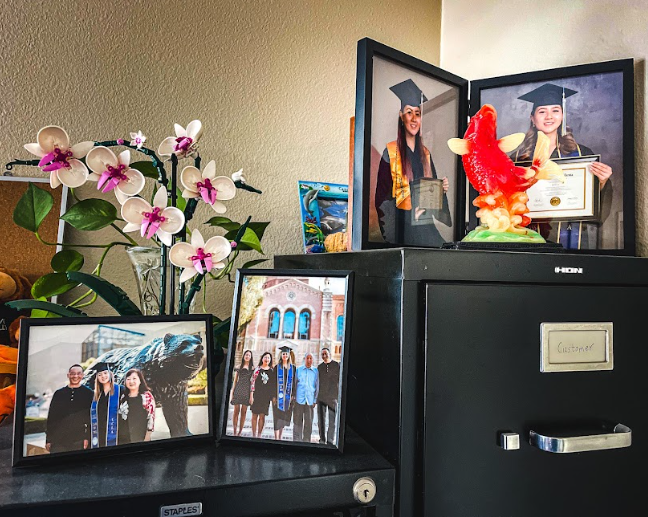
Silent Love
Karina Li
Shown in this picture are framed photographs from my sister’s college graduation, an orchid lego set, and a koi fish statue. Love is shown in the way that the person, my mother, framed and arranged the photos. By setting the photos out and arranging them beautifully, she is indirectly expressing that she is proud of my sister, who is in the photos. The lego set is also an expression of love from me because I built it for my mom during Christmas with her love for flowers in mind. The koi fish was a souvenir from 2019 when
when my family and I traveled to China to visit our extended family. Little did we know that it would be the last time in several years we would be able to see them, due to the COVID-19 pandemic. My mom has a habit of putting out various pictures of my sister and I around our house as a way to preserve memories of important events and as a way of saying “I’m proud of you.” This little corner is my mom’s collection of important memories, joy, and pride.
Asian American parents may express love in this way because they are not used to verbally praising their children, so they look to alternative, more subtle ways to show that they are truly proud of them. By taking the time to frame the photos, my mom is showing that she cares greatly about the photos and indirectly the memories associated with them. “Silent Love” illuminates the subtle ways in which first-generation Asian American parents express love and pride. As a first-generation immigrant from China, my mother came to the United States in the hope of a better future for her children. She prioritizes her children’s success over everything else, including her own well-being. It has always been her top priority to give her children the opportunities to gain a meaningful education and achieve a successful career. Kept in her office, these photographs are also reminders that she, too, has succeeded in cultivating the upbringing she hoped for her children. She strives to work as much as she can in order to provide only the best for her family. After experiencing financial insecurity in the early years of her life after immigrating to the United States, she has become more determined than ever to be able to support her children financially. This shows that first-generation Asian Americans show love in ways that may not be very evident at first, but holds so much meaning and care.
Knowing the story behind this picture, we can appreciate the importance of photographs and what success means for Asian American parents. This story also helps us understand the importance of showing others you care about them and are proud of them, even if it is not expressed verbally.
Organic Care
Abigail Shih

The primary subject of this picture is a homegrown guava being wrapped and protected by a homemade net. My mom has a fruit tree in our backyard, and she tends to it every day. One day, she realized that there were big bites out of the fruit. She made an innovative solution and customized nets shown in the picture out of scraps to protect these fruits from being eaten and damaged by other external forces. She always picks the prettiest ones to give out and leaves the more battered ones to use at home. Each guava being given out embodies both the care my mom has for her plants but also the care and thoughtfulness she has for whom she’s gifting the fruit. She gives out fruit in exchange for the help we receive from our neighbors. When a new Asian American family moves into our neighborhood, we are able to bond over some good fruits. For my mom, planting, caring for, and gifting
gifting food are how she expresses love and care.
Gifting fruits may be the Asian American way of giving a cake. The fruit symbolizes a blessing of healthiness for the other person. In many Asian American cultures, after dinner, instead of eating a dessert, they eat fruit. By sending fruit, they are also sending wishes of healthiness, especially because this is particularly emphasized in Taiwanese culture. Gifting fruits is one of the love languages of Asian American communities.
Similarly, during Lunar New Year or Mid-Autumn festival, we give “wishes” where we hope that each person is happy and healthy. Although Asian Americans may have initially started gardening as a way to ground themselves and make a home in the U.S, my mother gardens to create community. My mother also grows these fruits to give to our older relatives. Whenever she visits my grandma, a drive almost an hour long, she brings a bag full of fruit to share. When she does this, her intention is not only to wish for good health but also to prevent my grandma from going out too much. As much as she hates to show it, my mother worries about my grandmother and what might happen if she goes out by herself. With rising anti-Asian hate, my mother tries to be even more self-sufficient in order to keep our grandmother in the house. However, it begs the question: Why do Asian Americans feel the need to protect and isolate themselves while living in a country that is also their home?

Structure of Love
Abigail Shih
Love in this picture is helping someone fix problems, such as helping a person organize their schedule and events. Love is expressed by my mother when she helps in structuring my schedule and finding an organization style that suits me, which may include different types of planners with different themes or colors of highlighter. At the time, I had just entered high school and I had a problem with organization; my mom worked with me to find a long-lasting solution for planning all the events I had going on. Now, not only is the calendar
calendar reminiscent of my mom’s care, but the yearly trip to the 99-cent store to buy these planners is also a part of our bonding time. We would spend time looking at the dog planners, the cat planners, and the beach planners and find which one we would admire the cute pictures before finally choosing one and checking out.
[The pencil above the planner is decorated with a cute heart design. These pencils came in a variety pack and they were part of the first shopping trip we went on. It is now pretty short because I have used it a lot and it is a very good pencil with dark lead. There is a grip as well because my mom noticed that I had a callus on my finger and she was very anxious about it. When she first saw it, she was horrified and asked me how bad it hurt. I explained to her that it was no big deal and that it didn’t hurt at all. After a lot more questioning, she finally left and I returned to my work. The next morning, there was a new pack of pencil grips on my desk and I knew exactly who it was from. It was very sweet to know that my mom was thinking of ways she could help me and I was moved by the care and consideration that she was expressing. She also gave them to me in a very short amount of time. Although she has a lot to do everyday, she still took time out of her day to buy the grips and get them to me as soon as possible.
This form of love is a more practical form and helps me solve real-life problems. When I’m stressed, my mom is stressed with me. By helping me alleviate this problem and create an efficient system, she showed me how much she cares, which is shown through the fact that she noticed that struggle and rushed to think of a solution. Love comes in different forms, and helping others solve problems is one form. It may seem shallow at first, but thoughtful gifts can be very beneficial and help you fix your problems, even at as low of a price as 99 cents. These gifts symbolize the attention that person pays to you and their desire to help you. I have come to understand that pragmatic gifts are just as important and meaningful as comforting hugs. Gifts can also help solve problems and make you feel more comfortable.
The Last Dim Sum
Sean Lee

This picture was taken on Lunar New Year to celebrate the Chinese New Year, but also to commemorate 5 years since coming to the U.S. The picture captures a diverse array of food arranged on a tablecloth, which serves as a symbol of the various cultures present. The food, with its diverse colors, is meant to showcase the different cultures and ethnicities present in society. Furthermore, the food is laid out on the same table, depicting equality between individuals with different backgrounds. There is one leftover dim sum because my family didn't want to be the person to eat the last one, thus showing respect for each other. The shared act of eating unites people from different backgrounds, emphasizing the importance of community. The plates are all centered in the middle because our family shares food with each other rather than having individual plates.
plates. By doing so, our family can feel unity even from the smallest act. Personally, I have felt left out on multiple occasions, primarily due to cultural differences. Despite living in the same country, I have always sought ways to connect with others. One way to connect can be through food. Since food can be enjoyed by all kinds of people, it allows biases or disagreements to be set aside. As my dad says, "Foods are color blind.” Because food can bring people together, I believe food can be a starting point for forming a community.
Having a community is essential for our mental and emotional well-being. It provides a sense of belonging, a support system, and a place to share experiences and values. A strong community can help us overcome challenges and celebrate achievements together. When we feel connected to others, we are more likely to have a positive outlook on life, and our overall quality of life improves. Food is an excellent way to bring people together, but it is not the only way. Communities can form around shared interests, hobbies, or even a common goal. For example, a group of individuals who care about the environment can form a community to work together toward a more sustainable future. Similarly, people who share a love for a particular sport can come together to form a team or a fan club. In conclusion, communities are essential for our well-being and happiness. They provide a sense of belonging and support, and they allow us to connect with others who share our values and interests. Food can be a powerful tool for bringing people together, but it is only one of many ways to form a community. Regardless of how we choose to connect, it is crucial to remember that we are not alone, and there is always a place where we belong.

Signs of Good Memories
Courtney Lee
I am reminded of a joyful and chaotic celebration. The destroyed cake from “Tous Les Jours” in the center of the frame, surrounded by ten forks, tells the story of a shared experience among the group of Asian American underclassmen. Despite the chaos of the party, there is a strong sense of friendship and a need to spend quality time with one another. The act of getting the cake is an act of service, and the act of distributing forks is a kind of love that reflects the warmth of the group's relationships. It's clear that they are close friends as they are all using the same forks to eat the cake.
The table is littered with crumbled matcha cake, evidence of their carefree abandon and unrestrained happiness. The candles on the cake are covered in whipped cream, indicating that they are so engrossed in the moment that they have forgotten about the mess they are creating. The scene is filled with chaos, but everyone appears to be having a great time, abandoning their forks for some quality entertainment with friends.
The photograph highlights the importance of finding joy in the midst of chaos, especially during difficult times, and how friendship can have a noticeable influence. Meeting with loved ones can provide us the strength and support we need to confront life's most difficult difficulties. Food is a powerful way of bringing people together and expressing love and connection for many Asian Americans. Regardless of the challenges they may be experiencing, this photograph portrays a moment of joy and celebration among friends.
Regardless of our differences, we all have a need for camaraderie and affection, as seen by this group of friends sharing a cake and forks. This act of kindness and affection is a powerful expression of their friendship and a reminder that it is our relationships with others that make life worthwhile. The arrangement of forks around the cake represents a widespread tradition in many Asian cultures of food sharing among friends, which is considered as a gesture of love and caring. This powerful symbol strengthens the tie between these friends and emphasizes the value of human connections in our lives.
The group's decision to eat a Western-style cake from a shop that combines Korean and French-inspired sweets emphasizes the significance of cultural fusion. Notwithstanding the disparities in traditional Asian and Western desserts, the group is able to gather together and celebrate the customs and rituals that are important to them. This sense of belonging and solidarity is a striking witness to the Asian American culture's resilience and drive, especially in the face of persistent challenges and prejudices.
Education: Sharing Stories of Oppression
Lauryn Chew
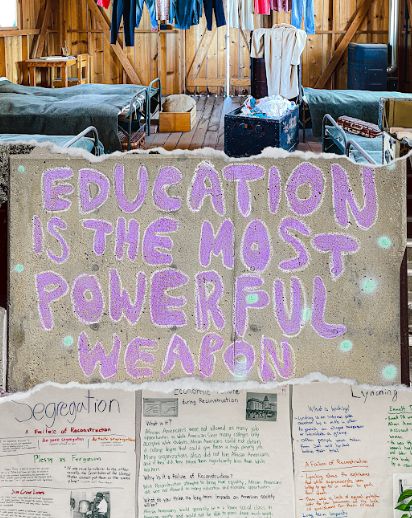
Created by sophomores several months ago, these posters describe the failures of the Reconstruction era and are still hung on the wall of my history classroom even now (bottom photograph). My history teacher, a young woman of color, saw the severe lack of inclusion in her textbooks growing up. Now, she is very vocal about the discrimination against marginalized communities and expresses her love through teaching. As a teacher, she encourages her students to learn history by discussing and analyzing primary sources that challenge the Eurocentric narrative taught in most classrooms and embedded into our society. Reflected in the poster, students were not forced to comply with a specific format for creating these posters and were only asked to share the primary impacts they believed were important to shaping American
American society. My teacher chose to have her students handwrite the information because processing and understanding information through this medium takes more effort.
February was Black History Month, and to stand in solidarity with the Black community, the volunteer-based arts coalition at my school used chalk to draw colorful pictures and quotes around our campus (middle photograph). This statement, “Education is the most powerful weapon,” was located next to the lunch line, so it was likely seen by the vast majority of students and teachers every day. I took this during one of my classes, which is why no other people are in the photo. Our campus demographics are predominantly Asian and white. Still, the recent spike in hate crimes against Asian Americans and the long history of police brutality against Black folks have prompted many students to find their own outlets for activism, including through club engagement, journalism, and visual and performing arts.
On February 20, 2023, my family visited the Manzanar incarceration camp for the third time, which is located in California and was the first of ten camps built after President Roosevelt issued Executive Order 9066 on February 19, 1942 in response to the Japanese attack on Pearl Harbor. The law led to the mass forced displacement of all people with at least a sixteenth of Japanese blood, regardless of their citizenship status, to deserted camps across the United States. Those Japanese Americans were forced to leave their homes, their jobs, and their friends behind as they endured several years of isolation and discrimination at the camps, yet they found ways to navigate those challenges by setting up classrooms and playing ball games, among other activities. Despite their contributions to their communities before incarceration, Japanese Americans were shoved into crowded, minimally protective barracks with strangers. However, the media claimed that the relocation was voluntary and consistently referred to all Americans of Japanese ancestry as “enemy aliens”. Hence, the story we are told today tends to downplay the mistreatment faced by Japanese Americans. As a student in the early Asian American studies program at the University of California, Irvine, my mom believed it was important for my brother and me to learn about the oppression faced by Japanese Americans at the time and brought us to the camp.
White supremacist logic in America can be traced back to the Atlantic slave trade, slavery, the coolie trade, the stealing of Indigenous land, race-based immigration bans, the eugenic movement, mass incarceration, and perpetual wars abroad. Throughout history, the United States has benefited from the exploitation of the labor of people of color. Yet, the government has repeatedly passed policies and created systems that have intentionally or implicitly discriminated against those same groups. Pushed forward by the media, communities of color have been defined by stereotypes, perpetuating inequities and justifying ongoing surveillance, policing, and violence on these communities. Public high schools like mine in the Irvine Unified School District have a reputation for their strong academics, which has attracted many Asian American families in particular. As a result, this collage prompts us to question who is writing the education that we are receiving in schools. For her sophomores, my history teacher has shaped her curriculum to show us different perspectives and experiences throughout history. While the middle photo makes our school appear to believe that learning is key to fostering compassion and inclusion, some events that our school holds highlight the issues that still remain on campus today. To celebrate Lunar New Year, the only event planned by our Associative Student Body was a chopstick challenge with jelly beans, which does not highlight any traditional lunar new year customs but only orientalize and reduce the complexity of Asian American identity into the use of chopsticks. It was frustrating that there was no discussion of the various customs among different Asian groups because the celebration was treated as a form of entertainment. However, there is some progress being made toward standing in solidarity with the Black community. Our instrumental music director, Ben Case, is part of the California Band Directors Association. After the Association chose to perform “Requiem for the Unarmed,” a piece written by African American composer Kevin Day as a memorial to the countless lives lost due to racial injustice, Case followed and had his students perform the piece at our Spring Concert on February 28, 2023. Additionally, my mom was a victim of a bias-motivated incident on February 13, 2020 at the Great Park Tennis Center in Irvine, California, so she continues to prioritize education about historical events through travel in order for my brother and me to appreciate our circumstances and understand the importance of helping others that are not given the same opportunities.
Unfortunately, learning about history from multiple viewpoints is a form of love that is uncommon in most schools. In addition to endless book bans, Florida recently rejected the proposed Advanced Placement African American Studies course, citing too much discussion of critical race theory. People of color are not the only ones being impacted as assaults on education regarding gender identity have also been prevalent. The effects of untold history on gender, class, sexuality, immigrant status, and race or ethnicity are all intersectional.
However, in October 2021, California became the first state to sign a law requiring Ethnic Studies for high school graduation. I live in Irvine, and our district has some of the highest-performing students, in part because of the cultural emphasis on education among the predominantly Asian American community. As a result, the teachers in our area are held to higher expectations by parents and district administrators, and my history teacher is willing to provide the resources that empower students to consider different sides of the story through tough conversations in the classroom. I did not experience love in the classroom where I felt that people who looked like me were accurately represented and acknowledged for their contributions throughout history until I started high school, though my mom began taking my younger brother and me to museums at a young age in order to show us a glimpse of the voices that were left out of our history textbooks. Teachers at my school who share their knowledge and are willing to recognize their misconceptions or internalized assumptions are giving students the space to come together and stand in solidarity with different communities, as seen through campus artwork by the arts coalition at my school.
While all families have different reasons for coming to America, many Asian Americans come to Irvine to start families because of its new housing developments, reputable schools, and safe communities that they hope will enable their kids to succeed. However, intergenerational trauma and lack of opportunities in the home country often lead parents to use the sacrifices they have made as justification for overwhelming their children with academic pressure.
Asian Americans express love by educating themselves and supporting the people they care about in reaching and sharing success with those around them. A concern that arises from this is that parent-child relationships focused too heavily on success may become transactional, which prompts discussion as to why so many Asian Americans feel that moving to a community known for its high-performing students despite its high costs of living and ultra-competitive learning environments will satisfy their definition of happiness for their children.
At the root of this anxiety towards securing a financially stable future for their children is a broader issue of cultural expectations to succeed without showing weakness or vulnerability because all Asian immigrants and Asian Americans have been lumped under the homogenous identity of a model minority that thrives without government support. This harms not only Asian Americans, but also Black, Latinx, Native Hawaiian & Pacific Islander, and Indigenous groups because their needs for equity are downplayed by the success of some Asian Americans. The systemic racism and injustice that permeates the fabric of our society today cannot be dismantled unless we are honest about our past, so schools and educational institutions must push for a curriculum that encompasses a wider range of experiences living and working in America.
